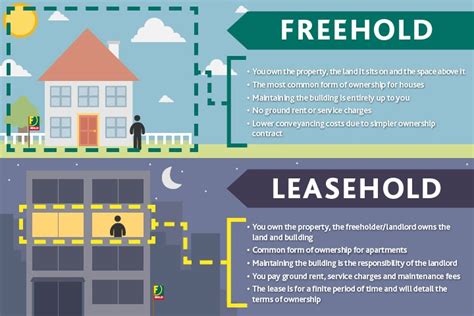Title: Leasehold Financing: A Comparative Analysis of 60-Year Ground Rent vs Fee Simple Appraisals
Introduction:

In the world of real estate financing, leasehold and fee simple properties present unique challenges for appraisers. This article aims to shed light on the differences between 60-year ground rent and fee simple appraisals, exploring the implications for leasehold financing.
I. Understanding Leasehold and Fee Simple Properties
A. Leasehold Property:
A leasehold property is an interest in land that is owned by the lessee for a specific period, known as the lease term. The lessor retains ownership of the land, while the lessee has the right to use the property during the lease term.
B. Fee Simple Property:
A fee simple property is an absolute ownership interest in land, with no limitations or restrictions. The owner has full control over the land and can transfer the property to others, either by sale or inheritance.
II. 60-Year Ground Rent Appraisals
A. Ground Rent:
Ground rent refers to the annual payment made by the lessee to the lessor for the right to occupy the property. In leasehold financing, a 60-year ground rent appraisal is often required to determine the property’s value based on the remaining lease term.
B. Appraisal Process:
1. Determine the remaining lease term: The appraiser must calculate the number of years remaining until the lease expires.
2. Research comparable sales: Identify and analyze similar leasehold properties with similar remaining lease terms and ground rent payments.
3. Adjustments: Make necessary adjustments to account for differences in location, property condition, and other factors.
4. Calculate value: Estimate the value of the property based on the comparable sales and adjustments.
III. Fee Simple Appraisals
A. Market Value:
Fee simple appraisals focus on determining the market value of the property, considering its current condition and location. The owner has full control over the property, so the appraisal reflects its potential for future development or sale.
B. Appraisal Process:
1. Property inspection: Assess the property’s physical condition, including structural integrity, amenities, and any potential issues.
2. Market research: Analyze comparable sales of fee simple properties in the area to determine market trends and values.
3. Adjustments: Consider factors such as property size, age, and location to make necessary adjustments.
4. Calculate value: Estimate the market value of the property based on the comparable sales, adjustments, and inspection findings.
IV. Implications for Leasehold Financing
A. 60-Year Ground Rent Financing:
1. Higher loan-to-value ratios: Due to the shorter remaining lease term, lenders may offer lower loan-to-value ratios for leasehold properties.
2. Higher interest rates: Lenders may charge higher interest rates to offset the increased risk associated with leasehold financing.
3. Shorter amortization periods: Lenders may require shorter amortization periods to ensure the loan is repaid before the lease expires.
B. Fee Simple Financing:
1. Lower loan-to-value ratios: Lenders may offer higher loan-to-value ratios for fee simple properties, as they have longer amortization periods.
2. Lower interest rates: Lenders may offer lower interest rates for fee simple financing, as the risk is lower.
3. Longer amortization periods: Lenders may allow longer amortization periods for fee simple properties, providing more flexibility for borrowers.
Conclusion:
Understanding the differences between 60-year ground rent and fee simple appraisals is crucial for leasehold financing. By considering the unique aspects of leasehold properties, lenders can make informed decisions about loan-to-value ratios, interest rates, and amortization periods. Both lessees and lenders should be aware of these differences to ensure a successful financing arrangement.



